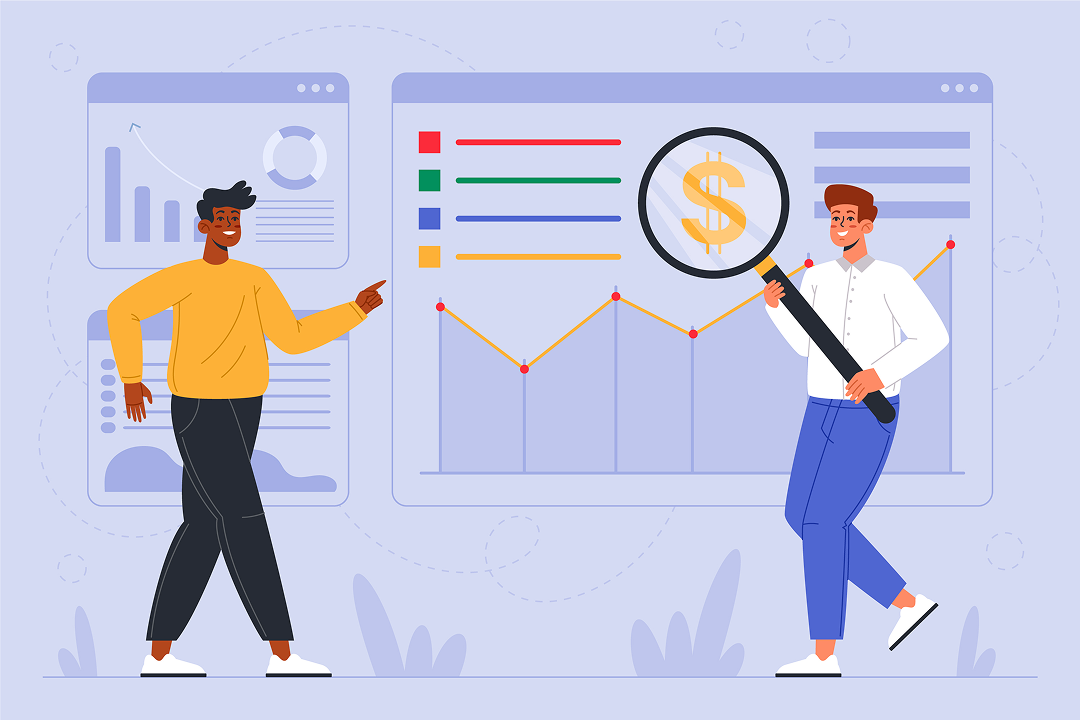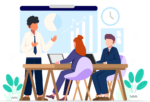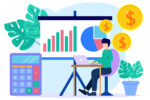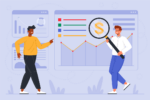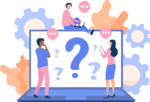If you still think of your learning and development (L&D) program as a nice-to-have, think again. In a fluctuating economy, companies are looking to tighten their operations wherever possible, and the smart ones have realized that their L&D department can directly affect their business outcomes and drive revenue growth.
The key to an L&D program that supports revenue enablement lies in honing the department so that it’s
- Tied to specific growth goals and
- Equipped with an LMS solution that can track and measure success.
We’ll take a look at 3 ways L&D can contribute to your revenue enablement strategy, plus tips on how choosing the right LMS can help you establish those revenue generating functions.
1. Create a stronger sales enablement strategy

Your sales team needs to communicate your product’s value to potential clients with confidence, and a sales-focused L&D strategy ensures they can do just that. Task your L&D department with educating sales on the product thoroughly and positioning it as the answer to client problems.
Within your L&D department, you can empower specialized sales enablement teams to create sales-oriented courses. Focus on:
Charting the customer journey in your industry
When your sales team understands why and how customers find your products, they’ll be better able to sell them. The customer journey informs your average sales cycle length, the scope and scale of your contracts, and the likelihood of renewal. Plus, it gives salespeople insights into how customers are feeling, and which problems are worrying them when they seek your products.
Insights like these help salespeople get in the minds of potential clients so they can sell more effectively. L&D can use your sales training LMS to give every salesperson a course in the customer journey as part of their onboarding, and schedule regular refreshers on keeping the customer journey in mind during the sales process.
Continuous learning with regular industry updates
Even the most informed salesperson can miss industry changes and market shifts, but your L&D department can help keep sales teams informed.
Plus, regular sales training programs keep your teams up-to-speed with the latest product improvements and features. They’ll have complete, accurate information on your product so they can sell with certainty.
L&D should schedule sales updates on a recurring basis – monthly, if possible, quarterly at the very least. This gives salespeople the chance to flag concerns or gain clarity on sales tactics, product features, or industry shifts that might be plaguing them in the field.
An LMS makes it easy to schedule regular talent development opportunities, or to make them a required part of the department’s learning and development certification.
Catering to remote sales teams
It can be tough to keep remote salespeople moving in the same direction, but a well-orchestrated L&D campaign ensures they’re all reading from the same playbook. Plus, learning together is a bonding activity for teams, especially those who might not see one another in person more than once or twice a year, or get few opportunities for professional development.
With an LMS, you can offer the same high-quality training to every member of the sales team, no matter where they are. Everyone’s equipped with the latest product and market data, and everyone understands the sales strategy they’re working towards.
2. Higher customer success metrics boost revenue enablement

Whether they use your product at work or at home, customers who understand your products thoroughly know how to get the most out of them. They’re happier with your products and services, and they’re more likely to report high rates of customer satisfaction and renew their contracts every year.
These informed clients are valuable, and their “customer lifetime value” only increases as they learn more about your products and company. They may even become loyal brand advocates, drawing new customers to your business down the line.
Your L&D program can educate customers on your company and products, arming them with the information they need to make your relationship a success. Customer learning should focus on:
Interactive learning
Your customers need more than boring stats and flat slides – if they’re going to learn and appreciate the full genius of your products, they’ll need to see them in action.
Ask your L&D department to prioritize interactive learning for your customers with features like webinars, videos, and live chats. Provide an online forum where they can ask questions and get insightful, helpful answers. Then, invite clients to participate in post-training discussions so they can become better acquainted with your company and customer relationship management team.
Use a customer training LMS to conduct a skills gap analysis, then engage your clients with training sessions that are tailored to their interests and needs. A good LMS will offer lots of interactive features and robust tracking and measurement tools to see how they’re progressing.
Regular engagement with customer success
Schedule customer training often, so your products stay top of customers’ minds, and they know how to use them. The better they understand your products, the more likely they are to turn to them to address various parts of their daily-to-day life. You might even find that there are land-and-expand opportunities with clients who use your products a lot and believe they could benefit other areas of their life.
Plus, regular training allows customers to interact with your customer success teams more often. It’s a great relationship-building opportunity that can reduce churn and keep clients signing new contracts.
3. Support revenue enablement with informed partners

Your partners are vital members of your revenue generating teams, but if they’re not clear on your product’s features and value, they won’t sell them effectively.
Like your other revenue teams, partners need extensive training to keep them up to speed on new editions and features and ensure they have a current understanding of the market and industry. Use your partner training LMS to offer:
Tailored learning objectives and courses
Some of your sales partners might understand your products well, while others might struggle to grasp each feature. Some partners are naturally better salespeople, and others might need training on basic sales techniques. Use your corporate training software to tailor online courses to your partners’ skills and abilities to give each one the best shot at success.
Mobile-friendly learning
Partners may be scattered across the country or around the world, but you can offer a cohesive training experience with a sales training LMS. You’ll know they’re getting the support they need to sell more effectively, and they’ll be more confident in their sales, knowing they can access help and training anytime, anywhere.
Gamification to incentivize learning
Keep your partners interested and engaged with leader boards, badges, and scorecards that make your sales and product training fun. You’ll see better training participation numbers, and partners will be able to forge a deeper connection with your brand.
The right LMS solution makes it simple
When you find a quality LMS, it can work a double shift as a revenue enablement platform. A good LMS solution like LearnRight can help you:
- Tie L&D efforts to business performance
- Highlight the skills gaps that are keeping your team from performing at peak
- Deliver engaging training that will keep every salesperson, customer, and partner up-to-speed and educated on your products
Book a demo to talk to the team about implementing revenue enablement with LearnRight. It’s time your learning programs drove more sales, trained more customers, and supported more partners.
